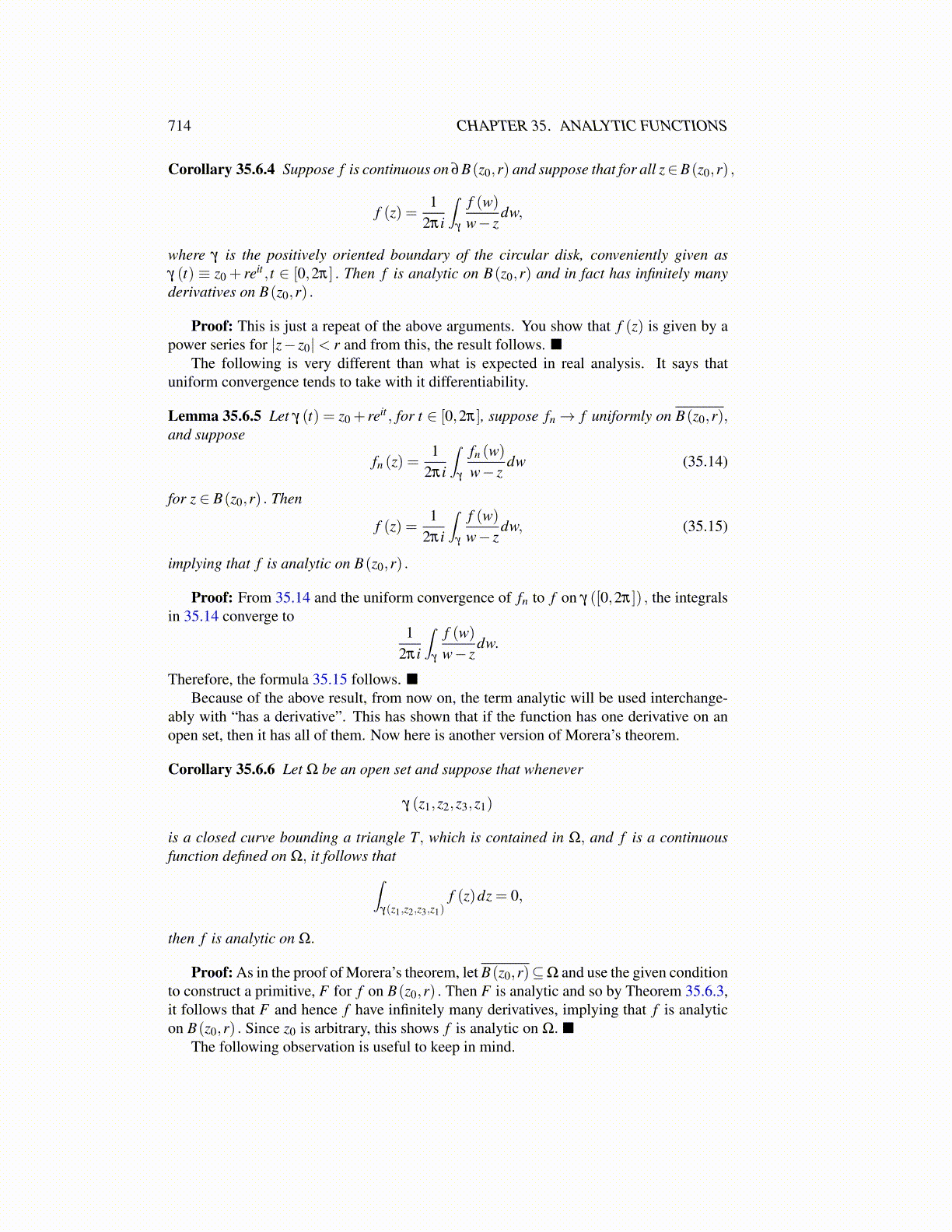
714 CHAPTER 35. ANALYTIC FUNCTIONS
Corollary 35.6.4 Suppose f is continuous on ∂B(z0,r) and suppose that for all z∈B(z0,r) ,
f (z) =1
2πi
∫γ
f (w)w− z
dw,
where γ is the positively oriented boundary of the circular disk, conveniently given asγ (t) ≡ z0 + reit , t ∈ [0,2π] . Then f is analytic on B(z0,r) and in fact has infinitely manyderivatives on B(z0,r) .
Proof: This is just a repeat of the above arguments. You show that f (z) is given by apower series for |z− z0|< r and from this, the result follows. ■
The following is very different than what is expected in real analysis. It says thatuniform convergence tends to take with it differentiability.
Lemma 35.6.5 Let γ (t) = z0 + reit , for t ∈ [0,2π], suppose fn→ f uniformly on B(z0,r),and suppose
fn (z) =1
2πi
∫γ
fn (w)w− z
dw (35.14)
for z ∈ B(z0,r) . Then
f (z) =1
2πi
∫γ
f (w)w− z
dw, (35.15)
implying that f is analytic on B(z0,r) .
Proof: From 35.14 and the uniform convergence of fn to f on γ ([0,2π]) , the integralsin 35.14 converge to
12πi
∫γ
f (w)w− z
dw.
Therefore, the formula 35.15 follows. ■Because of the above result, from now on, the term analytic will be used interchange-
ably with “has a derivative”. This has shown that if the function has one derivative on anopen set, then it has all of them. Now here is another version of Morera’s theorem.
Corollary 35.6.6 Let Ω be an open set and suppose that whenever
γ (z1,z2,z3,z1)
is a closed curve bounding a triangle T, which is contained in Ω, and f is a continuousfunction defined on Ω, it follows that∫
γ(z1,z2,z3,z1)f (z)dz = 0,
then f is analytic on Ω.
Proof: As in the proof of Morera’s theorem, let B(z0,r)⊆Ω and use the given conditionto construct a primitive, F for f on B(z0,r) . Then F is analytic and so by Theorem 35.6.3,it follows that F and hence f have infinitely many derivatives, implying that f is analyticon B(z0,r) . Since z0 is arbitrary, this shows f is analytic on Ω. ■
The following observation is useful to keep in mind.